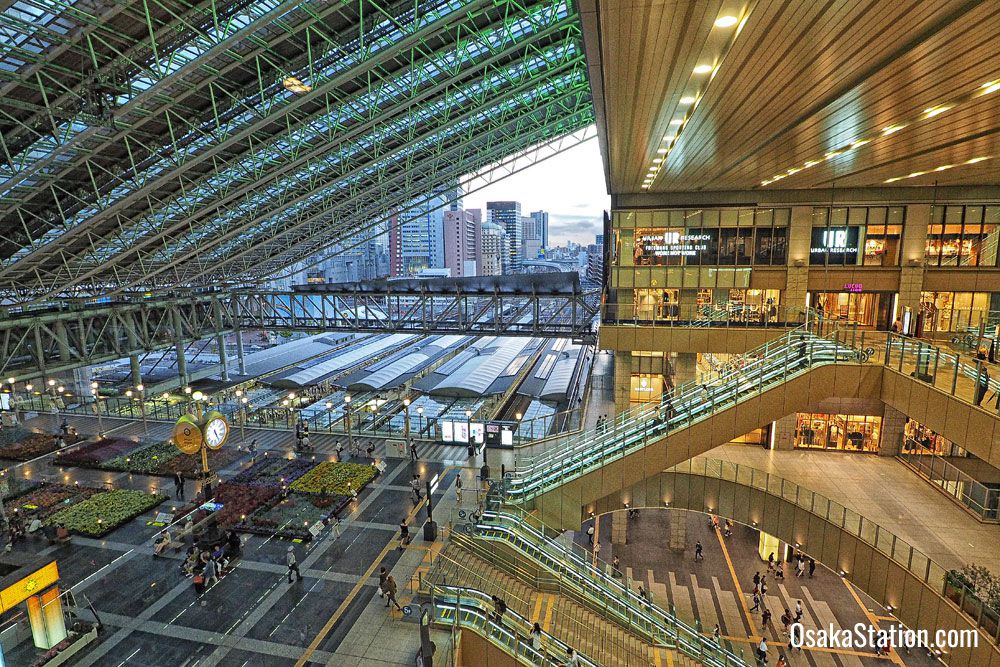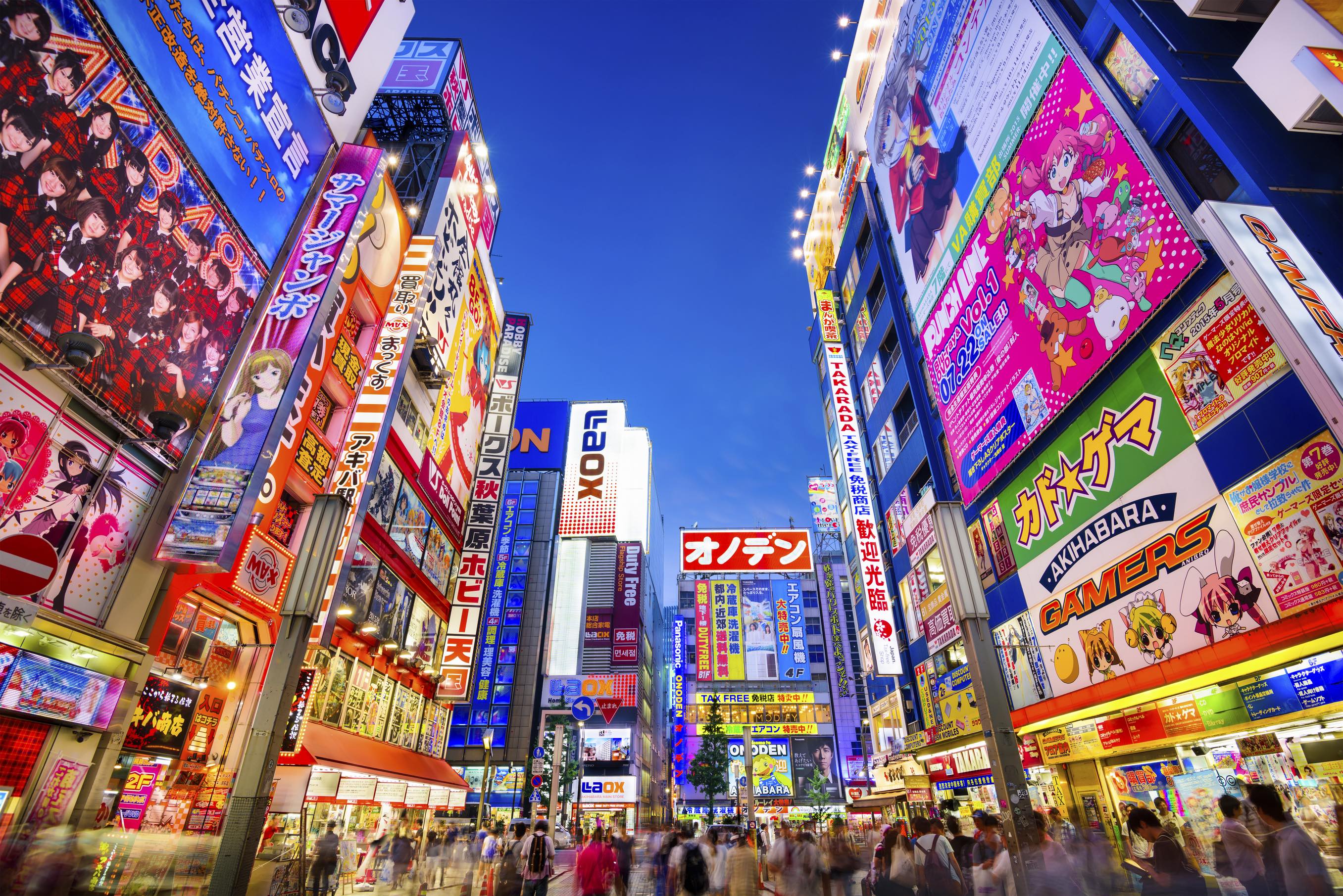Further Observations on Japan
Here is another listicle about Japan. This time the observations are random and in no particular order:
10. T-shirts/sweatshirts. Many people wear T-shirts or sweatshirts with names of U.S. states on them, like South Dakota or Maryland. Every now and then the shirt has the name of a college, often made-up.
As for a real college, Franklin and Marshall T-shirts are popular. Why? Zen zen wakarimasen (I have no idea). In any case, here’s the link to the Tokyo store.
9. Train stations. I’ve already noted how orderly everyone is on the platform while waiting for trains. What is perhaps even more amazing are the train stations themselves, particularly the big ones.
 The Tokyo, Kyoto, Kobe, and Osaka stations double as enormous shopping centers where, if you had a job and a bed there, you could live inside them your entire life. They have restaurants, food markets with everything from French cheese to Russian caviar plus all the Japanese goodies piled high, upscale clothing stores and house goods. Need a Fendi handbag? No problem. It’s the first store you see as you dive into the Kyoto station shopping mall.
The Tokyo, Kyoto, Kobe, and Osaka stations double as enormous shopping centers where, if you had a job and a bed there, you could live inside them your entire life. They have restaurants, food markets with everything from French cheese to Russian caviar plus all the Japanese goodies piled high, upscale clothing stores and house goods. Need a Fendi handbag? No problem. It’s the first store you see as you dive into the Kyoto station shopping mall.
8. Hugging/PDA. The Japanese are not demonstrative in public. When my son took me to his favorite okonomiyaki place, the woman who runs it hugged me upon learning I was Gerard’s mother. Gerard was amazed. She also hugged me upon leaving. He says this never happens.
says this never happens.
Here I am in front of the dish okonomiyaki (meaning ‘cooked how you like it’). The woman who hugged me is in the background. Her son is between us, leaning over.
On the train the other day we saw a young couple engaged in some serious PDA. The guy simply couldn’t keep his hands off his honey. I tried not to look and was pretty successful. As we got off the train we noticed several people, young and old, glaring at the couple in complete disapproval.
7. Toilets. The term ‘fancy ass’ applies. You may have already heard about Japanese toilets. They have all sorts of buttons, and since the controls come with instructions in Japanese, you just have to push one and see what happens.
Here is a set of controls, helpfully decoded.
I file Japanese toilets under the rubric ‘Clean.’ The Japanese really, really like to be clean.
Note: see my blog on Kinosaki-onsen – a Japanese Spa Town.
6. Karaoke. Kara in Japanese means ‘without’. Oke in Japanese is the shortened form of the English word ‘orchestra.’ It’s still big. You don’t have to get on a stage to do it. At a karaoke bar, you can go into a private room and sing your heart out into a microphone. I believe it’s customary to get drunk while you’re doing it.
5. Izakaya. Not quite a diner, not quite a fast food place, nor even a hole-in-the-wall, an izakaya is  some kind of cross. The atmosphere is friendly, the food is fast and good, and there are regulars.
some kind of cross. The atmosphere is friendly, the food is fast and good, and there are regulars.
Gerard hangs at Torisan in Koshien. He knows the owner and his son who runs the place, and he’s even helped out serving.
4. Smoking. People smoke. It was odd for me to see a man in a business suit on a bicycle smoking. In the U.S. biking goes with overall healthy living. In Japan a bicycle is just another mode of transportation, so the man  smoking on his bicycle is the equivalent of him smoking in his car.
smoking on his bicycle is the equivalent of him smoking in his car.
3. Hanshin Tigers. The Japanese take baseball very seriously. In Koshien, my hotel is across the street from the Tiger’s stadium, so I see and hear all that goes with it. People deck themselves out in Tiger gear and come with their two small bats that they beat together. They sing a special song for each Tiger when he comes up to bat.
2. Train station jingle. Back to train stations. On the Hanshin line when a train is approaching the station, the following jingle is played:
It’s a cutesy-fied version of “I’ve Been Working on the Railroad.” Railroad work is backbreaking. As a send-off to people at the beginning of their very long workdays, the jingle choice seems perhaps unintentionally cruel.
1. Signage. The most amazing visual feature of Japan (to my eye) is the amount of writing I see on every available surface: clothing, storefronts, rocks, even manhole covers.
even manhole covers.
The practice seems to be very old. At the Fushimi Inari Shrine in Kyoto, for instance, the thousands of vermillion torii gates all have inscriptions. The shrine dates back to the 8th century in Japan. The gates are more recent.
Throughout their day, the Japanese are confronted with writing everywhere and in four scripts: romaji (Roman alphabet), kanji (ideograms, largely borrowed from Chinese), hirgana (the syllabary used, among other things, to indicate grammatical particles), and katagana (the syllabary used to transliterate foreign words).
Far less serene than Fushimi Inari Shine is the Tokyo district of Akihabara, which presents an orthographic assault:

See also: Ten Things To Love About Japanese Culture.
Categorised in: Adventure, East Asia, Japan
This post was written by Julie Tetel Andresen
You may also like these stories:
- google+
- comment



